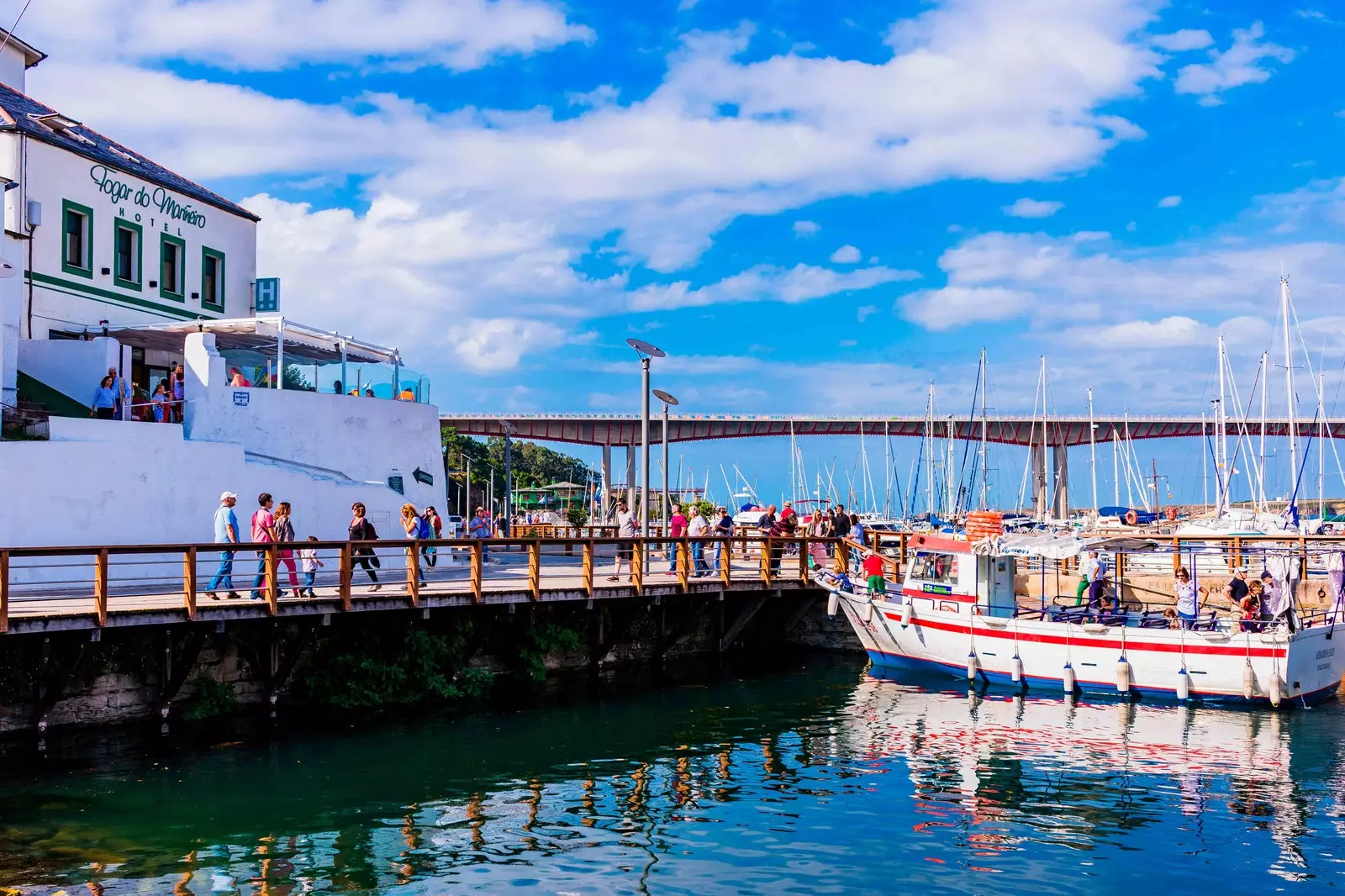
A port to fall in love with good food.
The northern Galician coast, the one that “limits to the north with England, through the sea”, as the old documents said, is a box of surprises that is worth discovering little by little. Even though it has popular towns like Ribadeo or Viveiro and that in it are jewels of the local tourist crown such as As Catedrais beach, is not as popular as, for example, the Rias Baixas.
Perhaps this is due to the fact that while in the southern estuaries cities like Pontevedra are part of the region and the airports of Vigo and Santiago are just a stone's throw away, up here everything is a little further away. The closest airports are Asturias, about 90 minutes by highway, and Santiago, a couple of hours. And getting there from Madrid, for example, takes a good six hours by car.
But that's what has made the Galician Cantabrian coast –or what is the same, the region of A Mariña– not only has it preserved a unique atmosphere and tranquility that many other coastal areas would like for themselves, but gastronomically, it has also it has preserved its own personality that is worth discovering. And what better way to do it touring traditional venues and current restaurants, bakeries, pastry shops and terraces with sea views from where you can dream – we all have – that the mist lifts and you might even see the Cornwall coast peeking over the horizon.
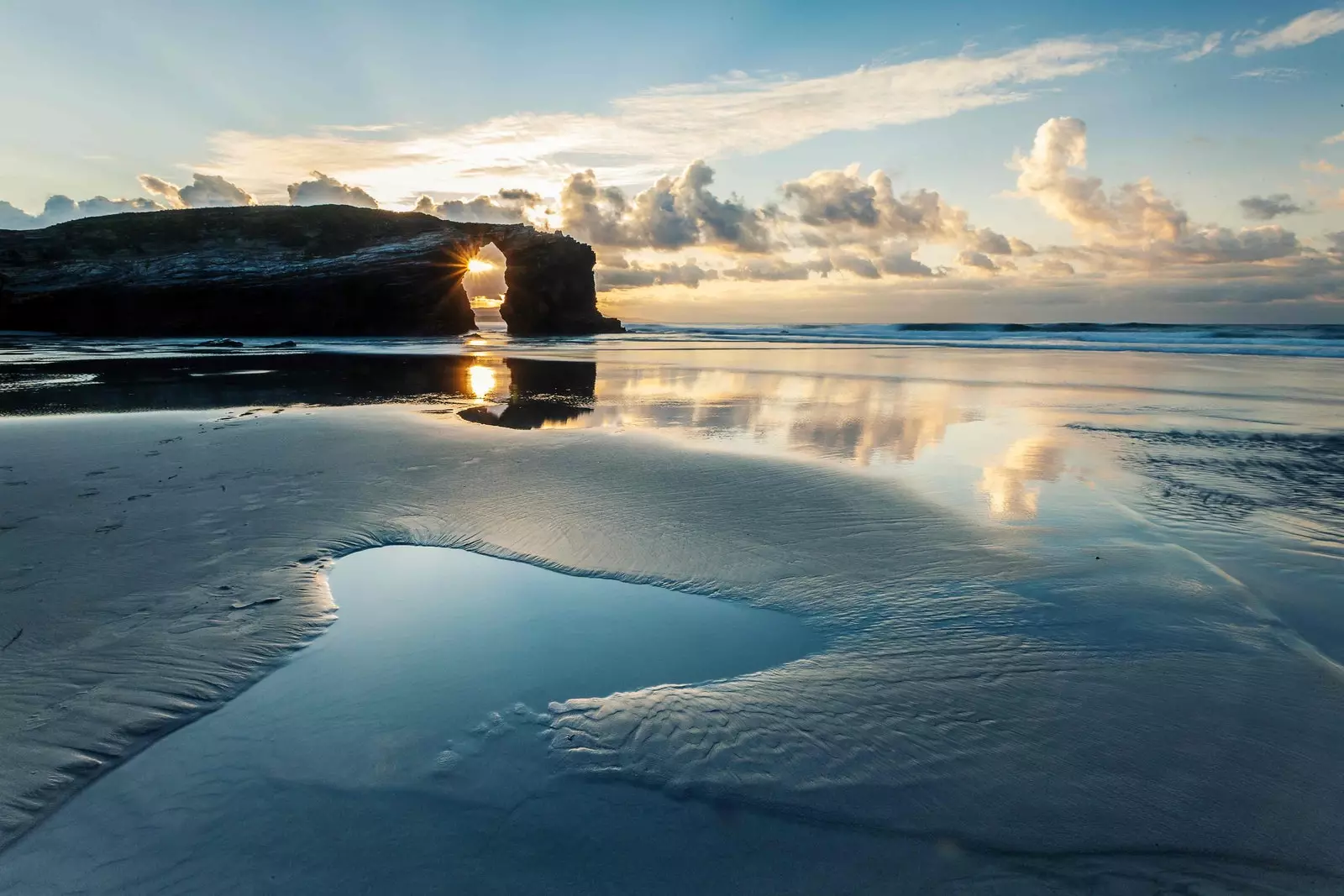
Most famous postcard of A Mariña.
TO EASTERN MARIÑA
Extends from the Asturian border, in the Eo estuary, to the small Foz estuary. Infinite beaches, cliffs and a coastal plain that quickly turns into hills, give shape to a landscape that, in some way, anticipates that of Western Asturias.
And there, right on the edge, overlooking the mouth of the Eo is Ribadeo, one of the main towns in the area. Here it is worth strolling down to the port, looking out over Asturian neighbors such as Castropol, Figueras or Vilavedelle from this shore and going back up, little by little, to the center to Have a drink on a terrace in the Praza de España and marvel at the Torre de los Moreno.
You don't have to go far to sit at a table at ** Texturas Galegas, Javier Montero's tavern,** a chef who returned to the area a few years ago to open this place and, shortly after, the Hotel Restaurant Javier Montero, at the entrance of the town.
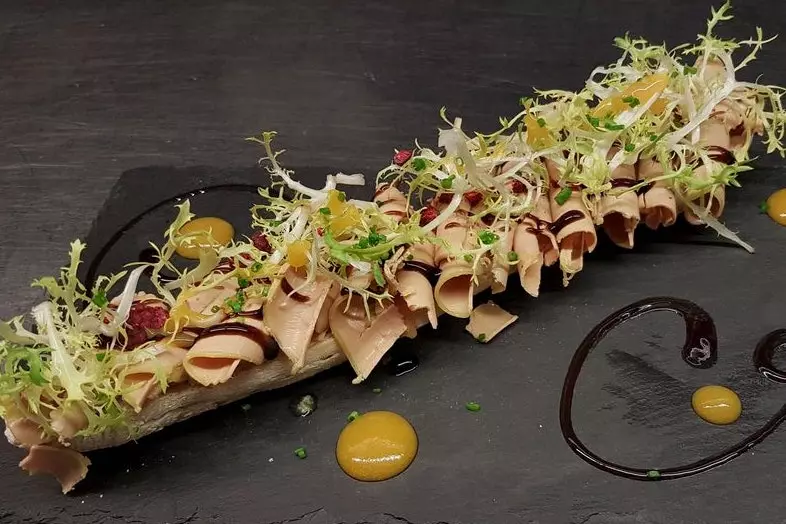
Local root tapas, product recipe book, by Javier Montero.
In the Texturas Galegas – if the weather allows it, the ideal is to reserve in its pleasant patio – the menu is based on tapas and portions of local roots: Potato and cod omelette with peppers, scrambled eggs with cockles and spinach, Baked potatoes with minced zorza…
At the Hotel Restaurante Javier Montero the menu is less informal, although it does not lose sight of the product and the recipe book of the area: the marinated sardine with pepper and smoked cheese mousse, the sea bass with Lourenzá beans and changurro or cod with Jabugo velouté are good examples of a proposal that is also offered in a tasting menu format at a very reasonable price.
A few kilometers away, in the ancient fishing village of Rinlo, is another of the restaurants that you have to know in the area. In to Miranda, just 30 meters from where the waves break, they have a simple menu based on the product of the local fish markets: hake with codium algae pilpil, fabas with cod gut, grilled turbot or viceroy or hake salad are some of its proposals.
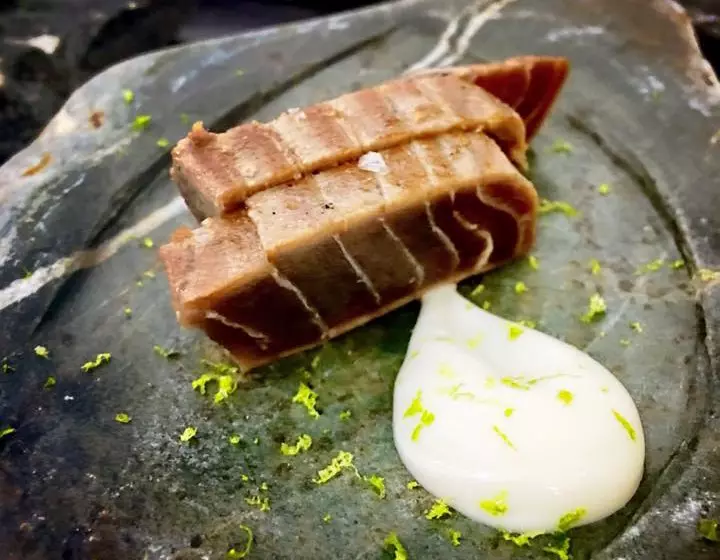
The fish market is the best friend of this restaurant.
TO MARIÑA CENTRAL
It is perhaps the least coastal of the three Mariñas. Or, to put it another way, the one with a larger interior. So much so, that the region is organized, on an axis from north to south, from two main towns: Burela, on the coast, and Mondoñedo, inland.
To Mondoñedo you have to go calmly, with time to walk around, to get closer to the cathedral, to sit down and have a coffee in the square that opens up in front of it, to discover mansions and chapels at every turn and to soak up that history of mythical characters, writers and legends that is in the environment. Álvaro Cunqueiro was from here, the great gastronomic writer of Galicia, and it shows.
If you want to opt for the more traditional side, be sure to approach the Crespo Bakery, in front of the Alameda de los Remedios, to order one of their wonderful empanadas or, if you go with less time, to make yourself one of their famous wood-fired oven breads. And if it's Sunday, look one of the tents of itinerant pulpeiros that are installed in some square of the historic center and enjoy.
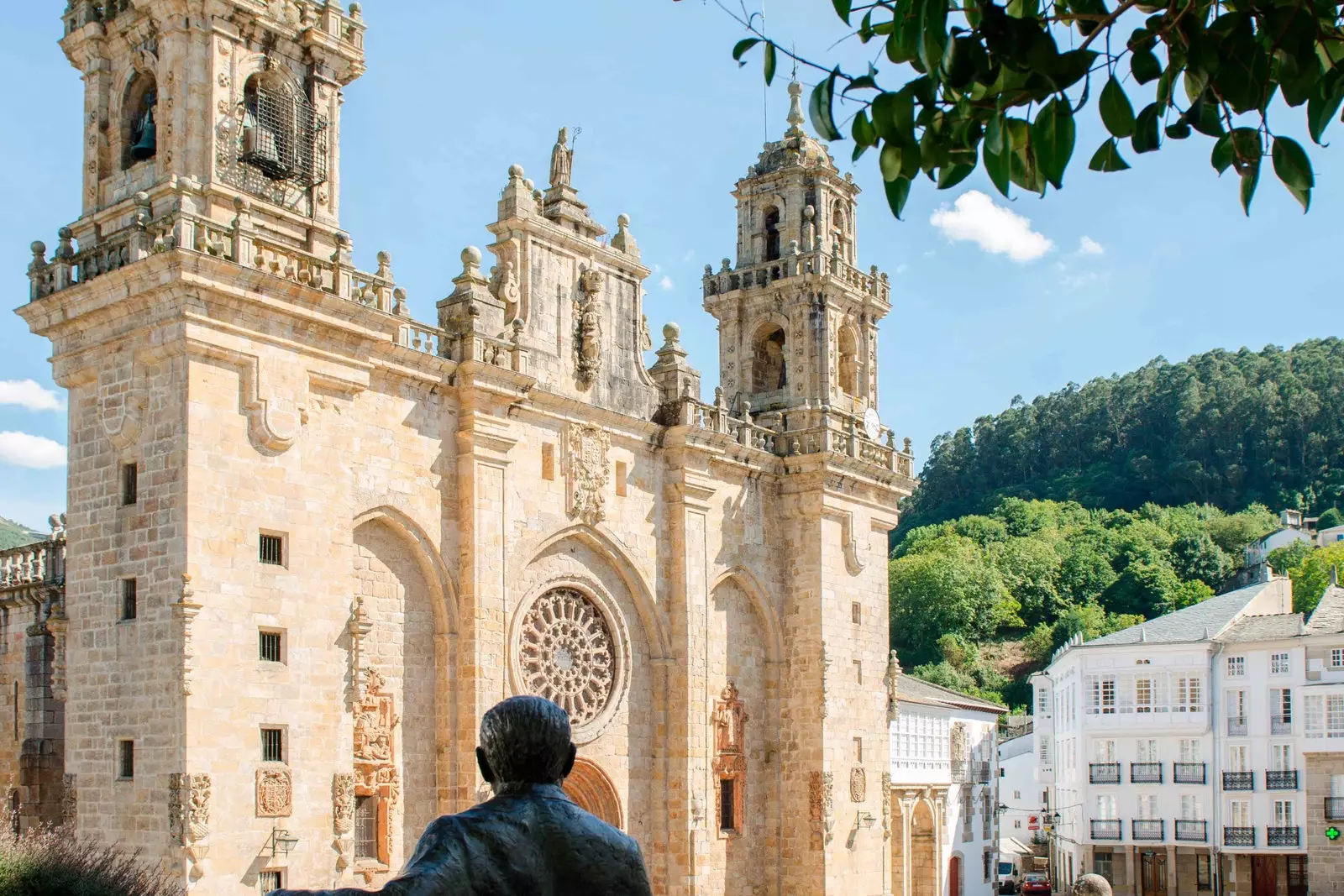
Álvaro Cunqueiro contemplates the Mondoñedo cathedral.
If you want something more current, ask for To Horta da Paula, the local reference. And you opt for one style or another, do not leave the town without trying the famous Mondoñedo cake. You will find similar versions throughout the region, with small differences that are worth exploring, but the truth is that the Midoniense is the one that has achieved the most fame.
It is not a light dessert, nor does it need to be. If you feel guilty, you can always take a walk in the hills of the area. Although it is likely that instead of that, you will end up asking for a second portion: find a place that serves it, order a coffee and let the time pass next to this monumental sweet that combines layers of angel hair, almonds and candied fruits.
Leaving the town to the north, you will pass through Vilanova de Lourenza, the capital of Galician beans, and between both towns, at the foot of the road, by to Voltina, a classic eating house f famous for its tortilla empanada. You have read well.
If what interests you is the coastal version of the region, leisurely walk the road from Foz, take a detour to visit the church of San Martiño de Mondoñedo, which is in Foz and not in Mondoñedo, despite its name. Its history dates back to the 6th century, when a group of Christians from what is now England came to this coast fleeing from the Saxons and founded the diocese of Britonia. San Martiño was considered the oldest cathedral in Spain, although it no longer holds that rank, and it is an impressive Romanesque building.
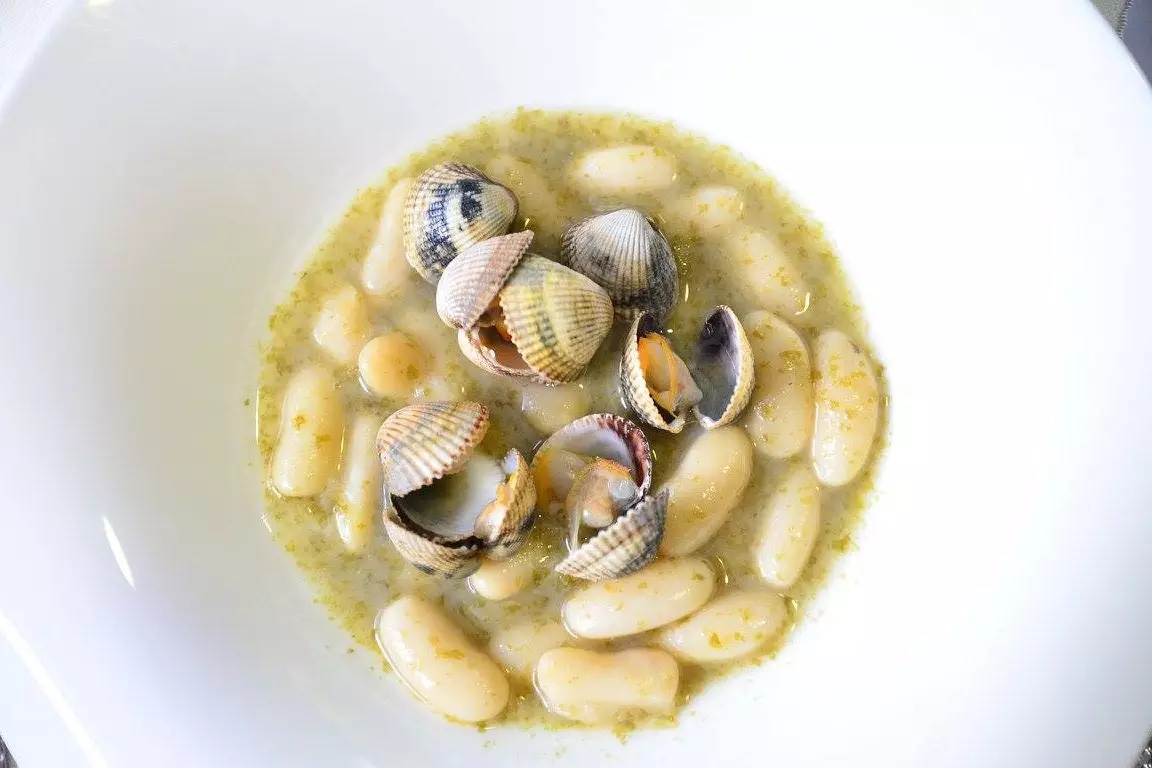
In Mondoñedo, it is a current reference.
continue bordering the beaches of A Pampillosa, Area da Fame or Os Alemáns, peek into the ruins of the Castro de Fazouro, the pre-Roman settlement that overlooks the cliffs, or go up to the viewpoint of Monte Castelo, from where you will see the entire coast of the region. Then come up to the Burela fish market.
It is not the prettiest place in the area, but it hides one of its tastiest treasures. Next to a secondary door there is a discreet sign. Then you will have to go up the stairs, enter the corridor, pass by the fish market veterinarian's office and, when you think you have lost yourself, you will find another door with a sign: Cafeteria A Lonxa.
This restaurant, although in principle it does not differ from many others, is one of the best places to eat fish and seafood in the area at honest prices. This does not mean that they are very cheap, because quality is paid for, but when you try it you will discover that, in reality, the value for money is more than favorable: For around €30 you can eat very well and, for €20 or €25 more, see first-hand why Galician fish and shellfish have such a good reputation and do it, moreover, without depriving yourself of anything.
Do you want to get a more concrete idea? On my last visit I had a lobster and crab salpicón, some fresh fried squid and a grilled sanmartiño (San Pedro fish) for two, about a kilo. We barely passed €40 per person, including water, dessert and coffee.

Cover like this and looking at the sea, what more do you want?
TO MARIÑA WESTERN
The region is organized around the other great historical town on this coast: nursery, one of the most charming towns on the Galician coast. You have to enter its historic center by crossing the A Misericordia bridge and going through the Renaissance gate of Carlos V. Among other things, because, just as you cross it, on the right hand side is the small Vale Pastry, where you can not stop trying local sweets like the colinet, the Viveiro cake (from the same family as Mondoñedo) or the almond cakes.
On the edge of the town center of medieval origin is the market, very lively, with great fish stalls and a very interesting bakery: More than bread. If you pass through there in the summer, don't forget to try its small sausage empanada (fresh sardines) .
Five minutes by car from the town center, next to the Area beach, you will find the Nite restaurant. If you only have the opportunity to enjoy a restaurant in the area and you want something that combines everything (product, room, views...), this should be your stop.
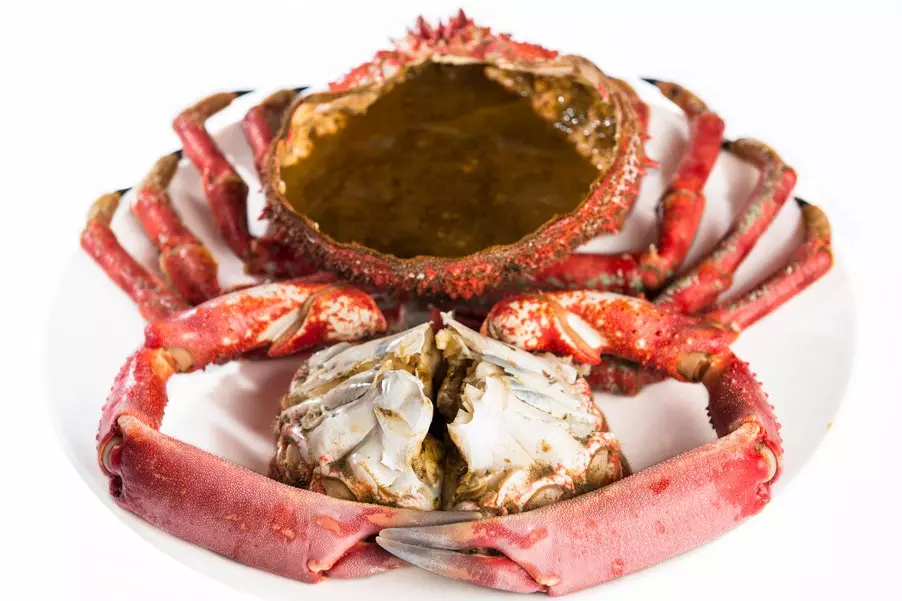
Over 50 years of premium seafood.
At Nito they have been serving the best product for 50 years and it shows. Now, after the last remodeling, the space has gained the packaging that it was missing. The views, especially at sunset, are a spectacle to add to its offer of seafood.
Their seafood is exceptional and, among its specialties, squid in its ink –or, in season, the tuna roll– cannot be missing from your order.
after this tour All that remains is to cross the bridge over the river Sor, which separates two provinces (A Coruña and Lugo) and marks the limit of the region. On the A Mariña side, the spectacular Arealonga beach. Opposite, the port of O Barqueiro.
From here it is only a ten minute drive to the Estaca de Bares lighthouse. The sunsets are impressive from up there, on cliffs almost 100 meters high, and they are not bad at all as the end of the getaway.
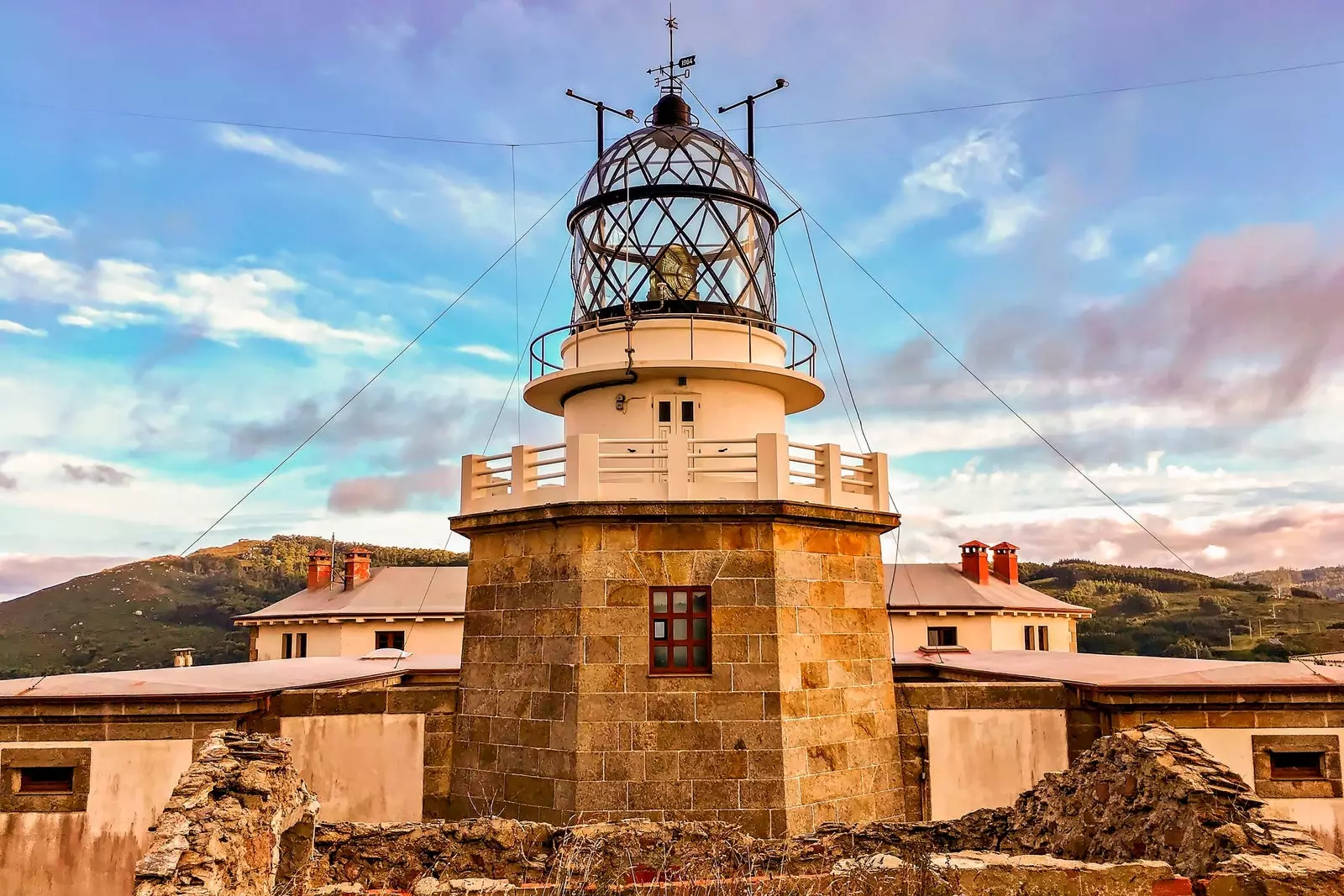
The end of the gastronomic route through A Mariña.
